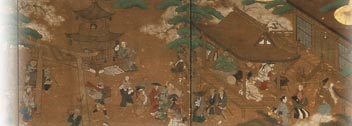International symposium "ACTING"
Outline
| date | January 27 - 29, 2012 |
|---|---|
| Venue | Waseda University (Masaru Ibuka Auditorium) |
Details
The research event that crowned the activities of the Global COE Programme took the form of a three-day international symposium titled “ACTING,” which was held January 27–29 of this year. As the final culmination of our work, we implemented an interdisciplinary experiment that benefited from the combined power of all six of our courses.
When we began the Global COE Programme, our aim was to integrate the disciplines of theatre and film studies. Of course, this doesn’t mean that we tried to fuse the two as academic disciplines. Rather, we set out to encourage researchers in both fields to pursue their studies in the same place, and learn from each other, with the intention of fostering new academic development. Over the past five years, the Film Research Course has collaborated with several other courses, including the Japanese Theatre Research Course, the Eastern Theatre Research Course, and the Western Theatre Research Course, thereby achieving an expansion in investigation and examination of silent film. Similar interaction led to multiple discoveries of important film materials in the fields of theatre and dance, thus adding what can be legitimately called a new dimension to the subjects being researched. In research on the culture and environment of the arts, many new themes were proposed that had an interdisciplinary impact on all of the courses, resulting in vibrant activity that took the form of some kind of event more than once a week. These interdisciplinary exchange activities also provided associate fellows in many different fields with a variety of possibilities for their studies, as well as opportunities to present research results at symposiums throughout the world. As a summation of these activities, this symposium had the key goal of investigating the idea of “acting,” a theme that is of common relevance to all of us.At the opening of the symposium on the afternoon of the first day, participants were divided into three sectional meetings where young researchers presented their findings. Four presentations were given in each of the following three categories: Western and Japanese Theatre; Film History and Theory; and Dance. In Room 1, Tsubouchi Memorial Theatre Museum Vice-Director AKIBA Hirokazu served as moderator; in Room 2, that role was undertaken by Professor KOMATSU Hiroshi, who heads the Film Research Course; and I myself served as moderator in Room 3. The abundance of the film research reported in the two rooms was particularly impressive. The level of the presentations was extremely high, and I sincerely hope that dissertations will be forthcoming on all the topics covered. The second half of the afternoon was devoted to a talk by Professor KODAMA Ryuichi concerning the recent confirmation that the Musée Albert Kahn houses the oldest known film footage of Noh and Kyomai performances in the world, which followed in the wake of Professor UCHIYAMA Mikiko’s discovery of the oldest known footage of Ningyo Joruri.
In the morning and first half of the afternoon of the second day, six sectional meetings sponsored respectively by each of the courses convened, all dealing with fascinating themes. In the second half of the afternoon, a lecture and panel discussion were held that focused on Brecht. This too, became an interdisciplinary discussion, and was jointly sponsored by the Eastern Theatre Research Course and the Western Theatre Research Course.
On the third day, presenters invited from overseas gave excellent lectures on “acting” in the three fields of dance, film, and theatre. In addition, there was a highly intellectually nourishing commemorative lecture given by ODASHIMA Yushi on the nature of translation, and finally summations of this project presented respectively by the young researchers and course leaders. The end of January is generally an extremely busy time for researchers, and one reason that the symposium was held at this time was the Great East Japan Earthquake. It was the only choice available to help ensure that researchers from overseas could participate with peace of mind. Despite these unfortunate circumstances, more than 300 people participated in total, over the three-day period. This was by no means a large number in relation to the venue we prepared, which is one of the largest at Waseda University, but the content of the presentations was extremely interesting, making the symposium an entirely satisfying experience.


